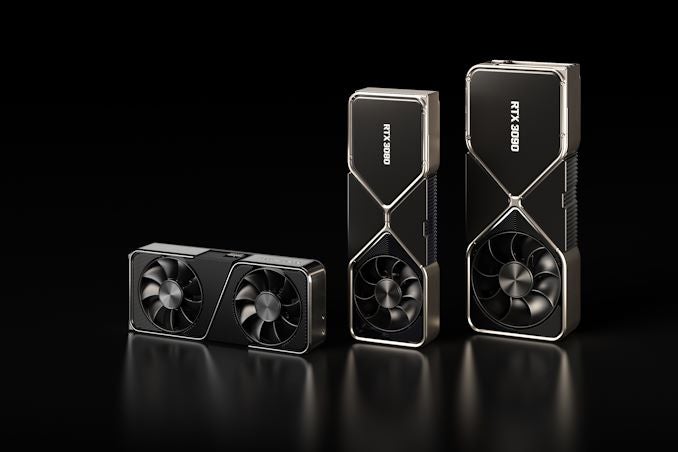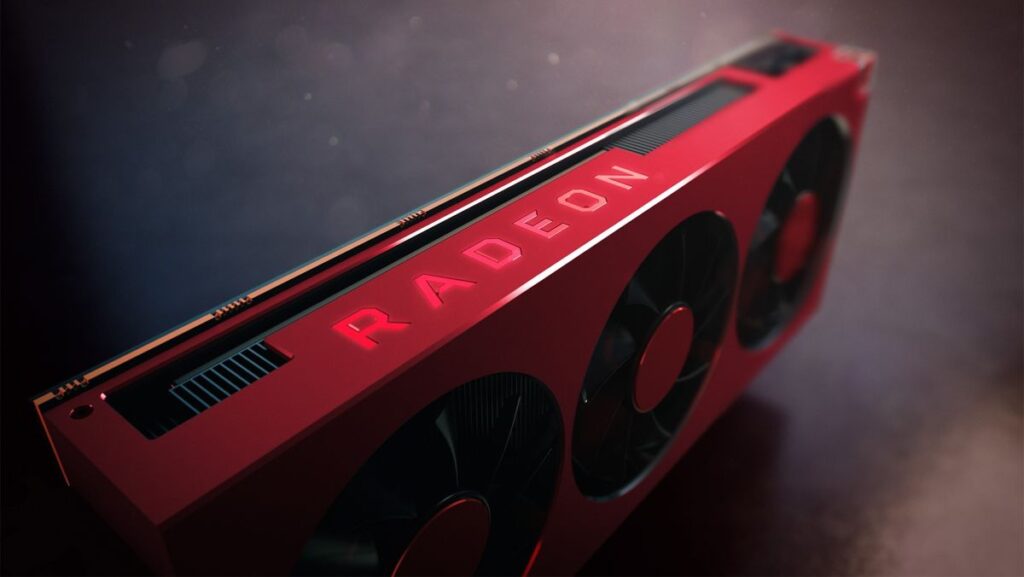Nvidia Ampere vs AMD Big Navi: Battle of the graphics cards

AMD and Nvidia have both finally revealed their next-gen graphics cards, with both the Ampere and Big Navi series offering impressive 4K performances while supporting the likes of DirectX RayTracing. But which is the best graphics card family to opt for right now?
We’ve lined up the AMD Big Navi and Nvidia Ampere graphics cards up against each other, comparing both the specs and performance benchmarks against each other.
We’ve only managed to review the Nvidia RTX 3080 and Nvidia RTX 3070 so far, which means we’ll have to rely on AMD’s own benchmark figures. With this in mind, we advise to take everything with a pinch of salt for now, at least until we review these graphics cards for ourselves.
[videoai]Related: AMD Big Navi
Nvidia Ampere vs AMD Big Navi specs – Which is more powerful?
It’s difficult to compare the specs of graphics cards that are using vastly different architecture. Nvidia’s RTX 30 Series graphics cards are using Ampere architecture, while AMD Big Navi cards feature RDNA 2 architecture. It’s the improvements to these architectures that often cause the huge performance leaps between generations.
AMD and Nvidia also use different kind of components and metrics that makes it even more difficult to compare. For example, Nvidia uses ‘CUDA Cores’ for its GeForce graphics cards, while AMD uses ‘Compute Units’. It’s absolutely pointless to compare the quantities of these against each other, so we’ve left them out of the below specs tables.
We can at least compare the likes of boosted clock speeds, memory and power consumption. Independently, these comparisons mean very little – it’s like comparing apples to oranges – but it’s still interesting to see which areas the rival companies have focused on.
| Boost Clock Speed (GHz) | Memory | Memory interface | Power consumption | |
| AMD RX 6800 | Up to 2105 MHz | 16GB GDDR6 | 256 bit | 250W |
| Nvidia RTX 3070 | Up to 1730 MHz | 8GB GDDR6 | 256 bit | 220W |
| AMD RX 6800 XT | Up to 2250 MHz | 16GB GDDR6 | 256 bit | 300W |
| Nvidia RTX 3080 | Up to 1710 MHz | 10GB GDDR6X | 320 bit | 320W |
| AMD RX 6900 XT | Up to 2250 MHz | 16GB GDDR6 | 256 bit | 300W |
| Nvidia RTX 3090 | Up to 1700 MHz | 24GB GDDR6X | 384 bit | 350W |
The specs show that AMD has put a big focus on clock speeds for its Big Navi graphics cards, surpassing all of the Nvidia cards. A clock speed indicates how many processing cycles per second can be completed by the GPU, with a higher number suggesting a faster performance. Of course, there are so many variables in a graphics card that a clock speed can’t be used as a measure of performance alone. This is shown with the RTX 3080 having a higher boosted clock speed than the RTX 3090, despite the latter clearly being the more powerful graphics card.
Meanwhile, Nvidia has decided to make the jump up to GDDR6x video memory for its high-end Ampere GPUs, which is faster than the GDDR6 standard that AMD is sticking with. Still, with 16GB GDDR6 memory featured in every Big Navi GPU yet, AMD’s graphics cards will hardly be slouches in this regard.
AMD seems to have a slight upper-hand when it comes to power consumption, with the 6800 XT and 6900 XT requiring slightly less wattage than the Nvidia rivals. This won’t really have much bearings on your game’s performance, but rather an indicator of what kind of PSU you’ll need to use.
Related: Nvidia RTX 3080 review
Nvidia Ampere vs AMD Big Navi performance
Without reviewing the AMD Big Navi or RTX 3090 cards yet, it’s difficult to offer a reliable verdict on the performance of these cards right now.
AMD shared some benchmark figures of the cards running various AAA games, but also mentioned these frame-rate figures were the highest they recorded rather than being the average scores. AMD will be using a completely different rig to us, with the likes of the processor usually having a decent impact on performance.
Still, we’re going to share our findings just to give you a rough idea of what each graphics card is capable of, even if they don’t offer a reliable indication of performance.

AMD suggests the RX 6800 XT can hit up to 138fps in Doom Eternal and up to 63fps in Borderlands 3, both playing in 4K. Our tests for the RTX 3080 found that the Nvidia graphics card can achieve an average of 167fps in Doom Eternal and an average of 59fps in Borderlands 3. These results indicate that the RTX 3080 is the superior card in this match up, but it’s difficult to know this for sure without testing.
In terms of the cheaper RX 6800, AMD claims it can hit up to 118fps for Doom Eternal in 4K, while Borderlands 3 saw a peak of 60fps. Our tests saw the RTX 3070 saw average frame rates of 101fps for Doom Eternal and 42fps for Borderlands 3. Since AMD is using ‘peak’ performance figures rather than the ‘average’, it’s difficult to establish which graphic card is the most powerful here, but it looks to be very close.
We unfortunately haven’t tested the RTX 3090 just yet, but AMD claims that the RX 6900 XT recorded better frame rate figures for Borderlands 3, Gears 5 and Call of Duty: Modern Warfare. However, AMD also conceded that the RTX 3090 saw better results for Doom Eternal, Division 2 and Resident Evil 3. It’s up to you whether you want to trust AMD’s own benchmark scores, but it does seemingly show that these graphics cards offer very similar performances.
It’s also worth mentioning that AMD Big Navi graphics card offer support for the likes of DirectX RayTracing and Variable Rate Shading. Nvidia offers similar solutions, but it’s currently unclear which company offers the best option. We reckon Nvidia will have an advantage for ray tracing, simply because it’s been fine tuning the technology for longer.
It seems that AMD currently lacks an alternative to DLSS, which Nvidia uses to negate the performance loss caused by ray tracing. If ray tracing is a big priority for you, you’re probably best off opting for a Nvidia graphics card for the time being.
Related: AMD Radeon RX 5900 XT
Nvidia Ampere vs AMD Big Navi price – How much will they cost?
Nvidia has officially revealed the pricing of its three Ampere graphics card. The RTX 3090 costs £1399/$1499, while the RTX 3080 and RTX 3070 cost £649/$699 and £469/$499 respectively.
AMD has yet to reveal the UK pricing of its AMD Big Navi cards, but it has confirmed the RX 5900 XT will cost $999, the RX 5800 XT will be priced at $649 and the RX 5800 is set at $579.
This means that AMD has managed to undercut all of Nvidia’s graphics cards other than the RTX 3070.
Related: Best Graphics Cards 2o2o
Nvidia Ampere vs AMD Big Navi release date – When will they launch?
The Nvidia RTX 30 Series graphics cards have already launched, but limited stock means it has been incredibly difficult to purchase one.
The AMD Big Navi graphics cards have only just been announced, with the RX 6800 and RX 6800 XT confirmed to hit stores on 18th November, while the RX 6900 XT will start shipping on the 8th December. AMD has suggested there won’t be as many stock issues as what Nvidia has seen, but we’ll have to wait to see whether that claim holds true.
Nvidia Ampere vs AMD Big Navi verdict – Which should you buy?
Despite both AMD and Nvidia revealing their cards (excuse the pun) it’s still difficult to determine which offer better value without reviewing them all first.
We at least now know that AMD will be launching direct rivals to every one of Nvidia’s three 30 Series graphics cards, making it a real head-scratcher no matter what your performance target is.
Keep an eye on Trusted Reviews for our reviews on the next-gen graphics card as we deliver a final verdict on the Nvidia Ampere vs AMD Big Navi debate.


